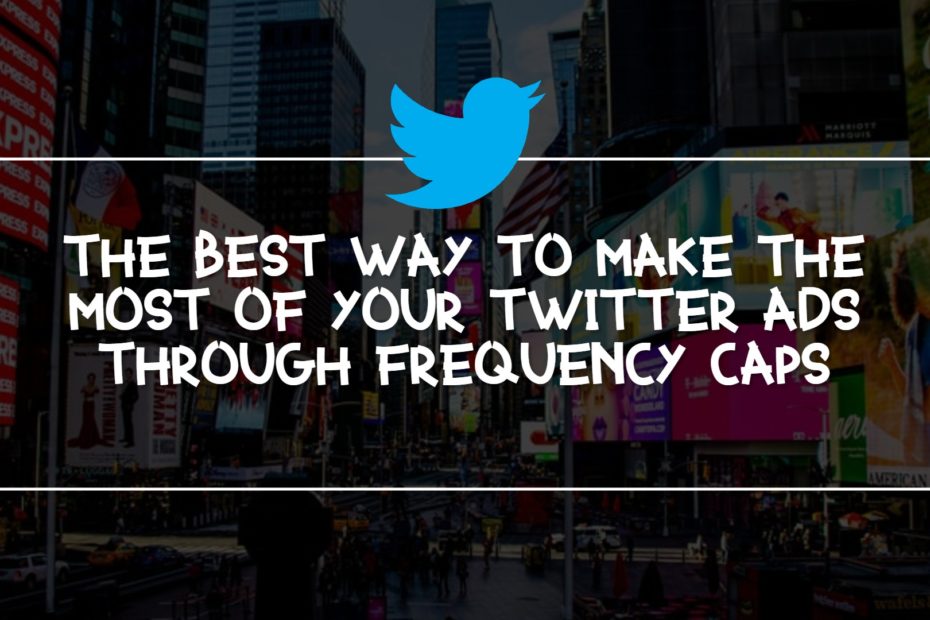If there is one thing that every marketer would agree with, it’s that a campaign’s success relies on effective audience reach. The social media platform Twitter is perfectly aware of this fact. For this reason, it launched Frequency Caps for ads on the platform globally.
Frequency Caps let marketers optimize campaigns to deliver outcomes. It works by giving advertisers the ability to control better impression delivery and hacking warnings and audience reach over long periods. Regardless of your aim is offline sales impact or brand lift, Frequency Caps will undoubtedly help your advertising efforts.

Why Do Frequency Caps Matter?
Twitter, researched campaign duration and optimal frequency settings. The aim is to help customers get their expected outcomes at scale. When buying Twitter followers, the frequency caps make sure you diversify the timing of your advertisements.
The research found out that weekly exposure frequency can drive upper-funnel brand metrics. It also revealed that within the first two exposures per week of a campaign, up to 80 percent of the potential impact on Brand Awareness and Ad Recall occurs.
Needless to say, Frequency Caps matter for advertisers on Twitter.
Below are the reasons why Frequency Caps are important:
1. Frequency Caps Provide Confidence in Delivery
Throughout the duration of every campaign that you launch on Twitter, this feature will allow you to control the number of times a person will see your ad.
2. Maximize Your Audience Reach
The feature allows advertisers to maximize their reach. Frequency Caps do this by redistributing impressions to new users.
3. Frequency Caps Enhance Campaign Outcomes
Frequency Caps provide advertisers with more control over your media delivery. This way, you will be able to optimize the outcomes that matter the most further.
Twitter Conducted Research on Campaign Duration and Frequency Settings
As mentioned earlier, Twitter conducted research in order to find out optimal campaign duration and frequency settings. This applies to Ad Recall, Campaign Awareness, and Brand Awareness.
Here are the findings that the social media giant had:

Optimal Frequency
Weekly frequency of exposure possesses an effect on driving upper-funnel brand metrics. Twitter’s research found out that up to 80 percent of the overall potential impact on Brand Awareness and Brand Recall occurs within the first two exposures per week of a campaign.
Moving down the funnel, the company found out that driving lift would need a slightly higher frequency. Advertisers can see the said relationship in Twitter’s analysis of Campaign Awareness. It shows that more exposure per week is required to achieve 80 percent of the overall potential impact.
Moreover, advertisers can attain further value through increased weekly frequency. However, the impact of every added weekly exposure decreases concerning the first impressions. Considering that campaigns have a fixed budget, increasing the weekly frequency of exposure has its own trade-off on the audience reach’s size.
Optimal Campaign Length
The length of the ad campaign on Twitter is important in terms of driving upper-funnel brand metrics. For instance, campaigns that have four to 12 weeks see more than 18 percent higher lifts in Brand Awareness. Similarly, campaigns with such duration see over five percent higher lifts in Recall and more than 14 percent in Campaign Awareness. Twitter Followers compared these measurements to those ad campaigns that were only up for less than four weeks at four exposures per week.
Using tools such as Frequency Caps are only one of the ways that Twitter is working to improve the impact of every marketer’s campaigns.
Choosing the Right Frequency Cap For your Frequency Campaign and Reach
Your Frequency Caps let you adjust the number of times, on average, that your target audience will see your ad within a period of time that you set. Besides, it impacts the number of individuals you will reach and how many times those people will see your campaigns.
You can set your Frequency Caps in a way that you will have either a higher reach or a higher frequency. When you have a lower frequency, your campaigns will show less frequently to more of your target audience. On the other hand, a higher frequency will show your ads more times, but fewer people will be able to see them.
In addition, you can opt to increase your campaign’s average frequency so that you can prioritize showing your ads to individuals who will see them multiple times.
However, it is important to note that increasing your average frequency decreases the overall number of people you will reach. This will take place in exchange for displaying your ads more frequently to people.
The Impact of Frequency Caps on a Brand’s Campaign
When advertisers set a frequency cap, Twitter predicts an average frequency that it can expect to deliver on for the campaign’s entire duration. For this reason, it is crucial to think about the overall frequency distribution of your campaign. This way, you will be able to avoid under-serving or over-serving ads to your target audience in a given area.
The average frequency of an ad is typically lower than the Frequency Cap that you set. It also represents a distribution of impressions that are delivered to people in an advertiser’s target audience. You will see these details in the Frequency Per Person chart when you are already setting up your ads.

Final Thoughts
The social media platform Twitter has already been serving advertisers with reliable tools for many years now. Regardless of the many tools that it already has, the company is aware that it can help advertisers.
Twitter’s Frequency Caps is no doubt helpful for advertisers. Through this feature, they will be able to control the number of people they reach and how frequently they will reach those people. With Frequency Caps, you will be able to prevent people from being either over-exposed or under-exposed to your ads.
